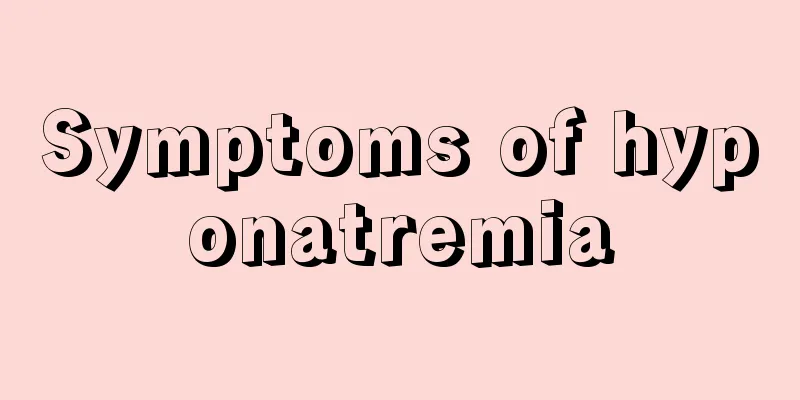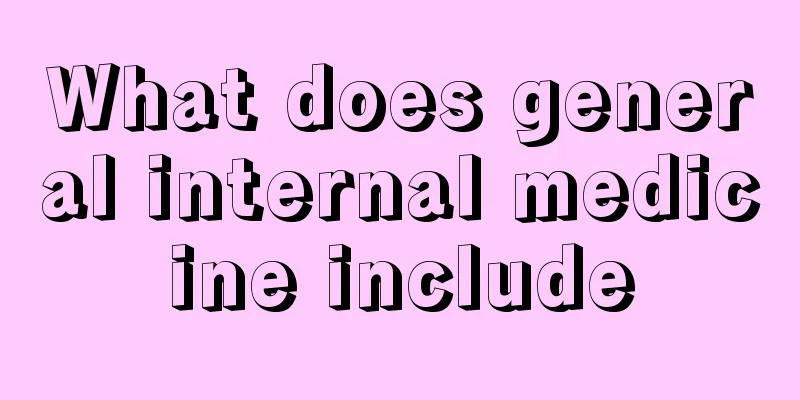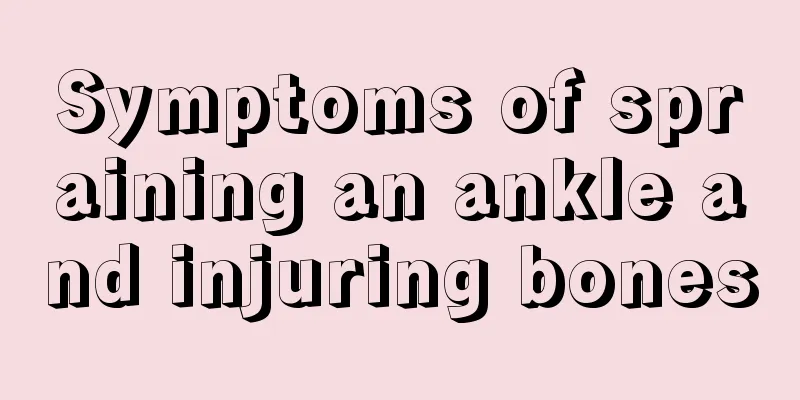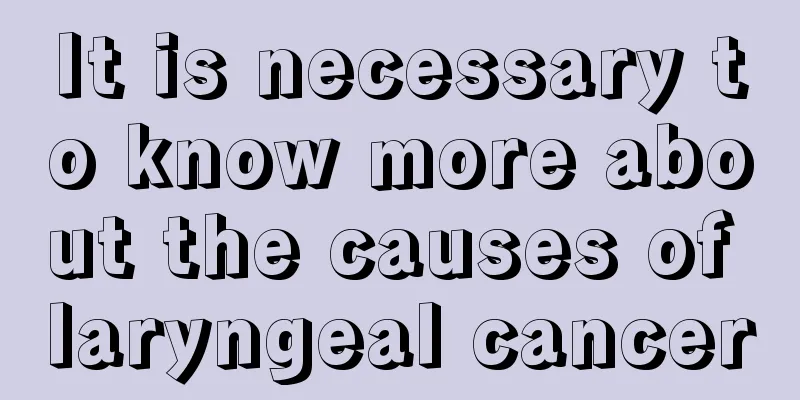Symptoms of hyponatremia

|
People are bound to suffer from various diseases in their daily lives, and different diseases will bring different symptoms to the human body. Hyponatremia is a disease that the human body is more prone to. Suffering from this disease will cause symptoms such as nerve damage, muscle cramps, gastrointestinal discomfort or headaches. In severe cases, it can also cause death. Below is a detailed introduction to the symptoms of hyponatremia. Typical symptoms The clinical manifestations and severity of hyponatremia depend on the rate at which blood Na+ and blood sodium decrease. When blood Na+ is above 130mmol/L, it rarely causes symptoms. When Na+ is between 125 and 130 mmol/L, gastrointestinal symptoms occur. When the blood sodium drops below 125mmol/L, cerebral edema is likely to occur. The main symptoms at this time are headache, drowsiness, muscle cramps, neuropsychiatric symptoms and reversible ataxia. If cerebral edema worsens further, brain herniation, respiratory failure, and even death may occur. [Other symptoms] If hyponatremia occurs within 48 hours, it is very dangerous and can quickly cause convulsions, coma, respiratory arrest or death, which can result in permanent neurological damage. [Diagnosis basis] 1. Based on clinical manifestations and determination of electrolytes such as blood sodium. 2. Hyponatremia in patients with low body volume is mainly caused by absolute or relative lack of body fluid. Low or falling blood pressure, poor skin elasticity, and laboratory tests showing a slight increase in blood urea nitrogen and creatinine all support the diagnosis. Symptomatic treatment] 1. Treatment goal of acute hyponatremia: to increase blood sodium by nearly 10 mmol/L or to 120-125 mmol/L within a short period of time (4-6 hours). Over the next 24 to 48 hours or longer, serum sodium concentration gradually returns to normal. 3% sodium chloride solution can be dripped intravenously, and diuretics can be injected at the same time to accelerate the excretion of free water, restore blood Na+ more quickly, and avoid excessive volume. 2. For chronic asymptomatic hyponatremia, the first step is to find the cause of hyponatremia and then treat it accordingly. For patients whose cause cannot be eliminated temporarily, measures such as limiting water intake and inhibiting ADH release to increase solute intake or excretion can be adopted. Chronic symptomatic hyponatremia is treated with sodium supplementation and diuretics to increase free water excretion. 3. Sodium-losing hyponatremia is common in gastrointestinal and renal sodium loss. Treatment is mainly with sodium supplementation. For mild cases, only saline or sodium chloride tablets can be taken orally, and water should be drunk to restore blood volume. In severe cases, normal saline or high-concentration saline is given intravenously. It should be noted that such patients should not be given glucose water, otherwise hyponatremia will be aggravated. [Drug treatment] 1. Treatment goal of acute hyponatremia: to increase blood sodium by nearly 10 mmol/L or to 120-125 mmol/L within a short period of time (4-6 hours). Over the next 24 to 48 hours or longer, serum sodium concentration gradually returns to normal. 3% sodium chloride solution can be dripped intravenously, and diuretics can be injected at the same time to accelerate the excretion of free water, restore blood Na+ more quickly, and avoid excessive volume. 2. For chronic asymptomatic hyponatremia, the first step is to find the cause of hyponatremia and then treat it accordingly. For patients whose cause cannot be eliminated temporarily, measures such as limiting water intake and inhibiting ADH release to increase solute intake or excretion can be adopted. Chronic symptomatic hyponatremia is treated with sodium supplementation and diuretics to increase free water excretion. 3. Sodium-losing hyponatremia is common in gastrointestinal and renal sodium loss. Treatment is mainly with sodium supplementation. For mild cases, only saline or sodium chloride tablets can be taken orally, and water should be drunk to restore blood volume. In severe cases, normal saline or high-concentration saline is given intravenously. It should be noted that such patients should not be given glucose water, otherwise hyponatremia will be aggravated. |
>>: How are eye wrinkles formed
Recommend
Does pregnancy with nasopharyngeal cancer affect the fetus?
Does pregnancy with nasopharyngeal cancer have an...
What to do if wool sweater pilling
Clothes made of wool are usually soft and warm, b...
What are the dangers of not sleeping at night?
Many friends cannot sleep at night because of wor...
What are the advantages and disadvantages of non-rosewood furniture?
The so-called non-rosewood actually refers to Afr...
Which cakes are likely to cause liver cancer? Eating these five kinds of cakes can easily lead to liver cancer
Don't buy these five types of cakes or you ma...
What is the most effective way to prevent lung cancer? Eight actions to prevent lung cancer
According to the test results released by the Dis...
Why are my calves swollen in the afternoon?
If your calves become swollen in the afternoon, i...
What is stage 2a of lung cancer
Lung cancer is a malignant tumor disease that occ...
What is the pathological diagnosis of laryngeal cancer
What is the pathological diagnosis of laryngeal c...
How to weave a shawl
Shawls have a long history and people have used t...
Sequelae of hemiplegia, there are these complications
Hemiplegia is very likely to occur in people with...
How long can you live with cystic kidney cancer
Kidney cancer is a disease that is difficult to c...
What can be eaten with mustard
The simplest way to eat mustard is to add some so...
Legs are not straight and knees are sticking out inwards
The inability to straighten the legs and the knee...
Are there any contraindications for patients with hamartoma to take medicine?
If we suffer from hamartoma, in order to avoid it...









